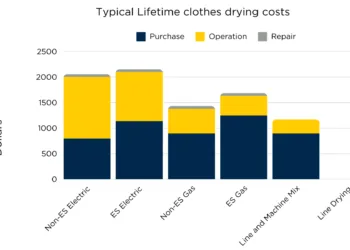The Growing Importance of Eco-Friendly Packaging in Asia
As global awareness around environmental issues continues to rise, the preferences of consumers are gradually shifting toward sustainable choices. This is particularly evident in the realm of food packaging. A recent survey conducted by Statista highlighted the varying degrees of importance that eco-friendly packaging holds for consumers across different countries in Asia.
Consumer Insights on Eco-Friendly Packaging
According to the survey, around 20% of respondents indicated that environmentally friendly packaging significantly influences their purchasing decisions when it comes to food. This preference encompasses packaging that is recyclable and minimizes or avoids the use of plastic altogether. The findings reveal a fascinating look into consumer behavior regarding sustainability across various Asian nations.
Regional Differences in Importance
Southeast Asia
In Southeast Asia, a notable trend emerges. Countries like Malaysia, Thailand, Vietnam, the Philippines, and India show a relatively high consciousness towards eco-friendly packaging. Between 26% to 33% of respondents from these nations expressed concern about sustainable packaging when shopping for groceries.
Furthermore, Indonesia stands out with the highest percentage of respondents—40%—who consider eco-friendly packaging crucial in their decision-making process. This strong inclination toward sustainable packaging may reflect increasing environmental awareness and a push for more responsible consumerism in the region.
East Asia
Conversely, East Asian countries such as South Korea and Japan display a much lower emphasis on eco-friendly packaging. With only 13% of South Korean respondents and a mere 5% in Japan expressing concern for eco-friendly options, it suggests a potential cultural or market-based gap in the prioritization of sustainability when compared to their Southeast Asian counterparts.
China’s Perspective on Eco-Friendly Packaging
In China, the importance of eco-friendly packaging also varies. Only about 24% of respondents indicated that sustainable packaging was a significant factor in their food purchases. Interestingly, other factors were deemed more critical. For example, approximately 60% prioritized freshness, 54% sought good taste, 48% valued high quality, and 42% looked for natural ingredients.
This ranking underscores a fascinating aspect of consumer preference in China, where the emphasis on product quality and freshness often overshadows environmental considerations. Nevertheless, the fact that eco-friendly packaging still ranks within the top ten consumer priorities suggests that awareness is gradually building.
Implications for Brands and Retailers
The implications of these findings are profound for brands and retailers operating in the Asian market. As consumers increasingly demand eco-conscious options, companies must adapt to meet these expectations.
Embracing Sustainable Practices
Businesses that incorporate eco-friendly packaging into their practices can potentially tap into a burgeoning market of environmentally aware consumers. This shift not only caters to consumer demand but can also enhance brand loyalty and reputation in a competitive landscape.
Tailoring Strategies by Region
Companies must recognize the significant regional differences in consumer attitudes toward sustainability. In countries where eco-friendly packaging is a higher priority, brands can mark this as a key differentiator in their marketing strategies. Conversely, in regions with less emphasis on sustainability, brands might focus on other aspects like product quality and freshness to attract more customers.
Conclusion
As Asia becomes more attuned to the implications of packaging waste and environmental sustainability, it’s clear that eco-friendly packaging is set to play an increasingly vital role in consumer choices. The current landscape indicates a diverse range of preferences across different countries, emphasizing the importance of tailored approaches for brands and retailers seeking to thrive in this evolving market.
Consider your own purchasing decisions: how do eco-friendly packaging and sustainability shape your choices? The onus is on both consumers and brands to navigate this pivotal moment in promoting a greener, more sustainable future.





